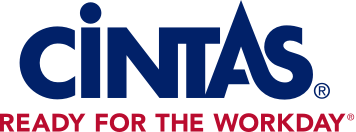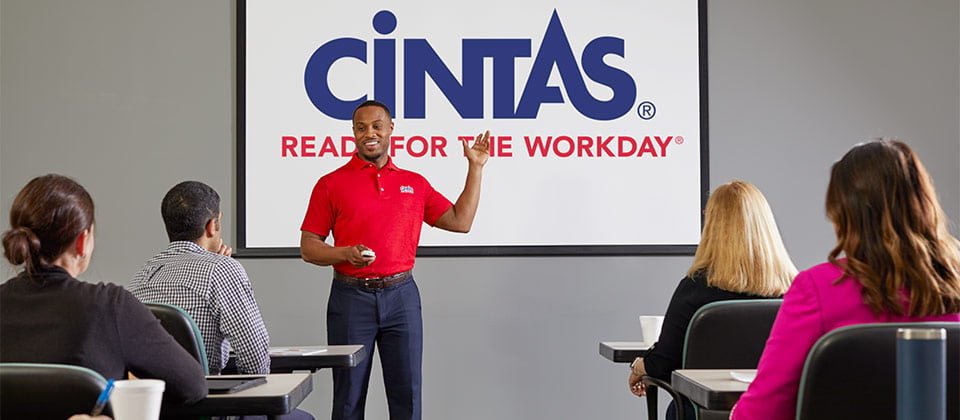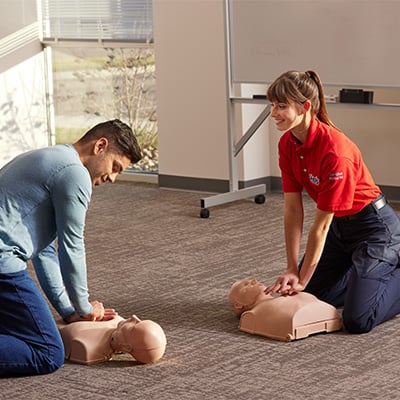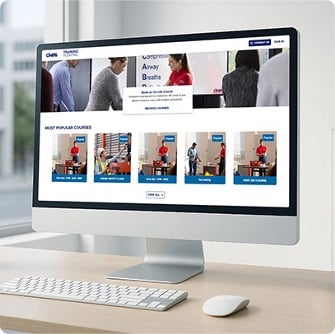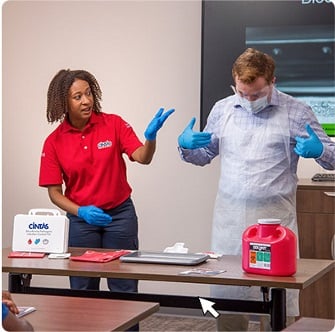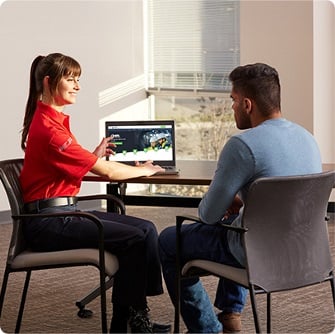Don’t let these CPR myths keep you from acting in an emergency
CPR is a critical, life-saving skill that almost anyone can add to their toolbelt. In fact, in the event of sudden cardiac arrest (SCA), a person is two to three times more likely to survive if CPR efforts begin immediately, according to the American Heart Association (AHA).
But for many, performing CPR can be extremely intimidating. With a person’s life on the line, it’s natural to worry about making a mistake — and that anxiety can cause people to freeze in an emergency.
The reality is that many of the reasons bystanders hesitate when conducting CPR are based on common myths. Learn the facts behind some of the most misunderstood aspects of CPR and see how easy it can be to help save a life.
Myth: I’m unsure of my CPR skills. I may accidentally hurt someone.
Truth: When a person is unresponsive, any action is always better than inaction.
In the event of SCA, acting quickly is imperative. Brain damage can start within 4-6 minutes of SCA, according to NYU Langone Health. That’s not enough time to wait for medical help to arrive. And while you might hope that someone else nearby will step in, another bystander may be just as unsure of their skills as you are.
Another common myth is that performing CPR can result in legal liability. The reality is that in the U.S., all 50 states and the District of Columbia have Good Samaritan laws on the books that will likely protect you if legal issues arise. According to Purdue Global Law School, so long as you’re acting responsibly and in good faith, you’re legally protected in most situations.
Myth: I know rescue breaths are important, but mouth-to-mouth makes me uncomfortable.
Truth: Rescue breaths aren’t always necessary.
Yes, issuing rescue breaths during CPR helps supply oxygen to an unresponsive person’s lungs. But while mouth-to-mouth plays an important function, let’s face it — it can be extremely awkward, especially when performed on a stranger.
In fact, the ERA’s Journal of Medical Research concluded that laypeople and medical professionals have been “increasingly reluctant” to provide CPR with rescue breaths “due to discomfort with the situation and concerns about disease transmission.”
The reality is that in adults, compression-only CPR has shown to be just as effective in the first few minutes of treatment when compared to CPR with rescue breaths, according to the AHA. Chest compressions will continue to circulate blood throughout the body, and a person’s blood can remain oxygenated for several minutes after the heart stops.
The AHA says rescue breaths are still important in cases involving infants, children and in cases involving asphyxia, like drowning or overdose. But in most other cases, chest compressions are enough.
Myth: I don’t have a medical degree, and I’m not certified. I can’t help.
Truth: Two hands are all that is needed to save a life.
In most cases, the only thing you need to conduct life-saving CPR is the ability to push down on a person’s chest with two hands. That’s it. You don’t need formal medical training or official certification.
According to the AHA, hands-only CPR requires only two simple steps: Call 911 (or direct a bystander to do so) and push hard and fast in the center of the victim’s chest at a rate of 100 to 120 beats per minute. Hum a song like “Stayin’ Alive” by the Bee Gees or “Crazy in Love” by Beyoncé to regulate your compressions.
Practice builds confidence
The best way to shake your nerves? Practice. A training session with a certified CPR instructor will give you hands-on practice and help make your motions instinctual. Click to learn more about how you can bring CPR training to your workplace.
